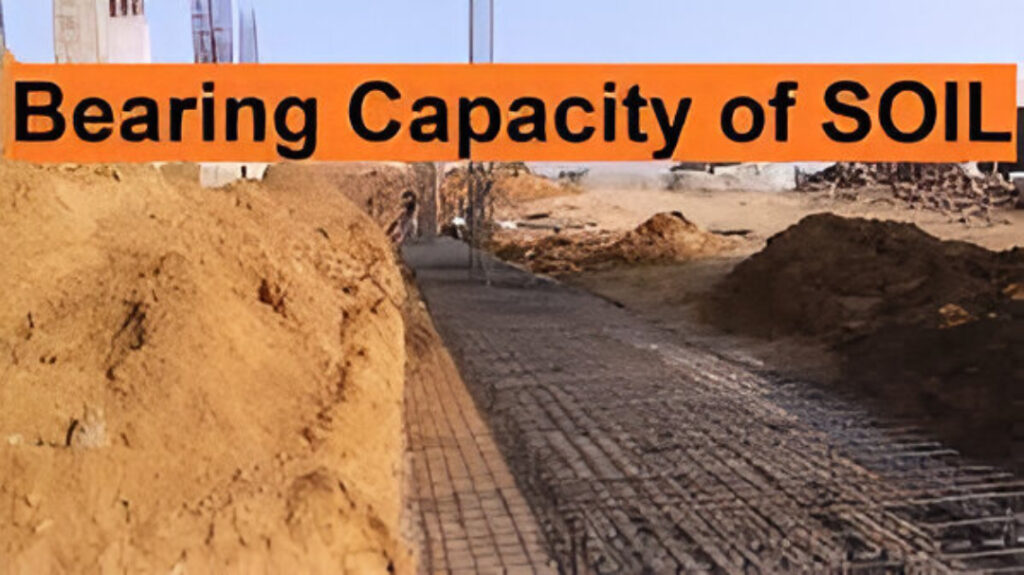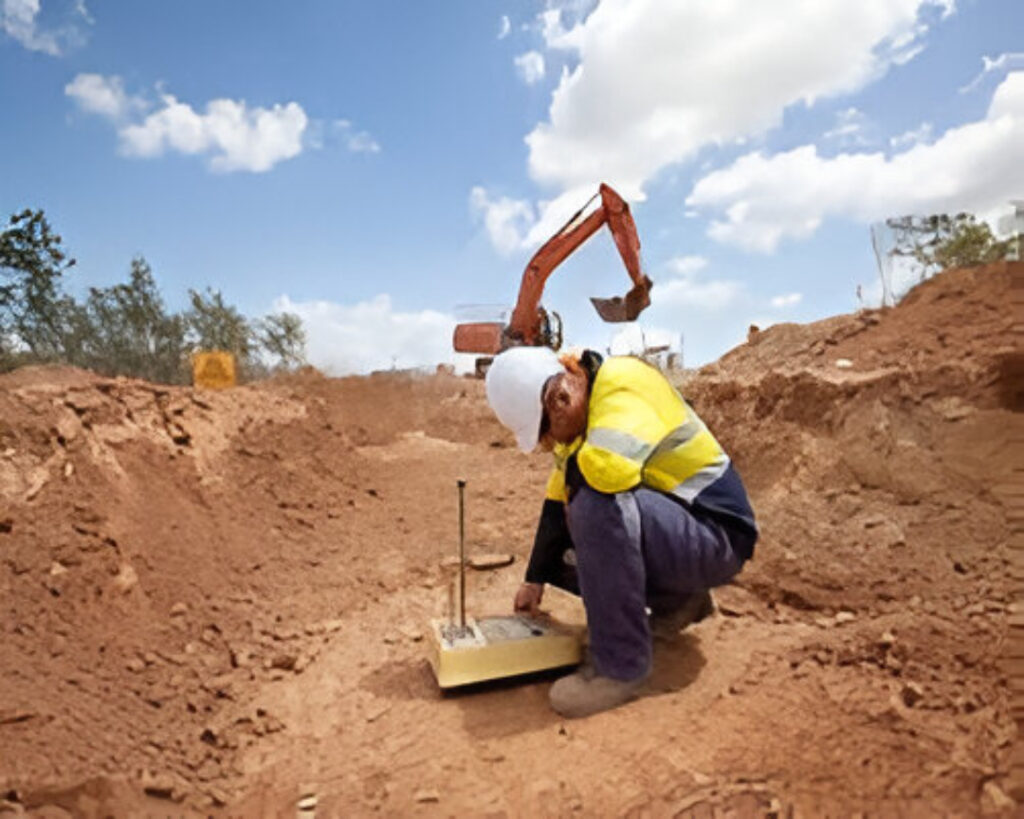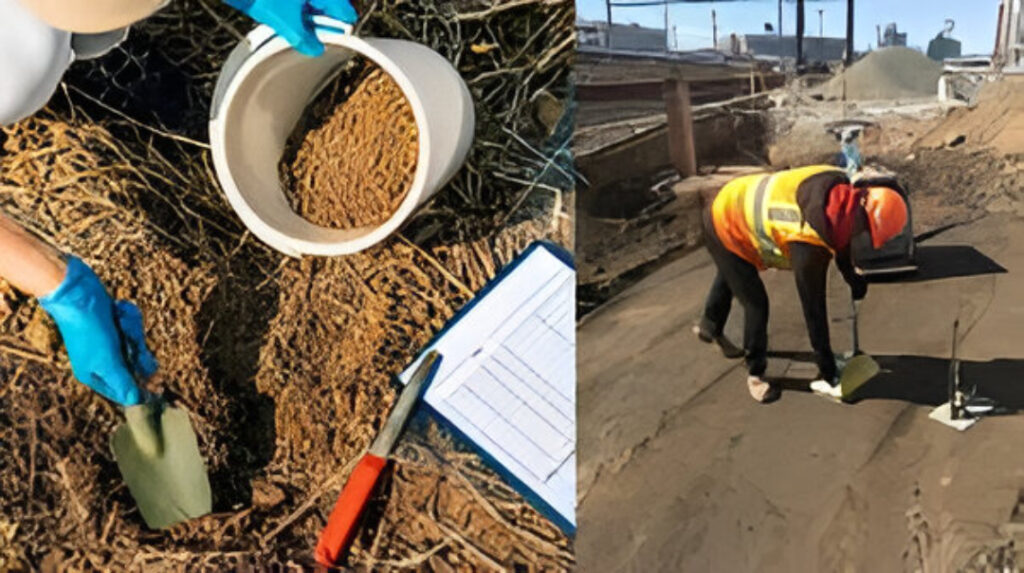Every strong building begins with a reliable foundation, and the reliability of that foundation depends on what lies beneath — the soil. Before any construction begins, one critical factor must be determined: the soil bearing capacity. Understanding this concept is essential for builders, engineers, and architects alike, as it ensures the safety, durability, and cost-effectiveness of the entire structure.
In this guide, we break down what soil bearing capacity means, why it matters, how it’s tested, and how it influences construction decisions.

What is Soil Bearing Capacity?
Soil bearing capacity refers to the maximum load per unit area that the ground can support without experiencing failure or excessive settlement. In simple terms, it indicates the maximum weight the soil beneath a building can safely support.
If a structure exerts more pressure than the soil can support, it can lead to uneven settlement, cracks, or in extreme cases, structural collapse.
Why Soil Bearing Capacity is Important in Construction
1. Safety of the Structure
A building constructed on weak or untested soil is at risk. If the soil fails to support the weight of the structure, it could lead to cracks in walls, slanted floors, or even collapse over time. Knowing the soil’s bearing capacity helps prevent these hazards.
2. Foundation Design
The type, size, and depth of the foundation depend directly on the soil’s strength. Strong soil may allow for shallow foundations, while weak soil may require deeper pile foundations or soil stabilization methods.
3. Cost Efficiency
Understanding the soil’s capacity in advance helps avoid costly surprises later. It allows engineers to design the most efficient foundation, saving both time and money during construction.
4. Legal and Regulatory Compliance
Many municipal authorities require a soil bearing capacity report before approving construction plans. Testing ensures that the project meets all local building codes and safety standards.

Factors That Affect Soil Bearing Capacity
Not all soils are created equal. Several factors influence how much load a soil can bear:
- Soil Type – Gravel and rock typically have high bearing capacities, while clay and loose sand may have lower values.
- Moisture Content – Wet soil often has reduced strength, making it less stable under load.
- Density and Compaction – Denser and well-compacted soils generally support more weight.
- Depth of Water Table – High water tables can weaken soil strength and lead to shifting foundations.
- Presence of Organic Material – Organic soils are compressible and not suitable for supporting heavy loads.
Common Methods to Determine Soil Bearing Capacity
At HiTech Civil Test Lab, we use standard testing procedures to evaluate the bearing capacity of soil with precision and accuracy. Here are a few common methods:
1. Plate Load Test
This is a field test conducted by placing a steel plate on the soil surface and applying load incrementally. The settlement is measured at each stage to determine the safe bearing capacity.
2. Standard Penetration Test (SPT)
A borehole is drilled, and a split-barrel sampler is driven into the soil using a hammer. The number of blows required to drive the sampler is recorded and used to estimate soil strength.
3. Core Cutter Method
For cohesive soils, a cylindrical core cutter is used to extract a soil sample. Its density and moisture content are tested in the lab to calculate bearing capacity.
4. Dynamic Cone Penetration Test (DCPT)
This test involves driving a cone into the ground using a standard weight. The resistance offered by the soil gives an idea of its load-bearing strength.
Typical Soil Bearing Capacity Values (Indicative)
- Soft Clay – 50 to 100 kN/m²
- Medium Clay or Sand – 100 to 200 kN/m²
- Dense Sand or Gravel – 200 to 400 kN/m²
- Rock or Hard Soil – Above 400 kN/m²
Note: Actual values vary based on location, moisture content, and other local conditions. Always test before designing.
How Builders Can Use This Information
- Before starting a project, consult with a certified testing lab to conduct soil investigation at the site.
- Use the test results to finalize the type of foundation – whether it should be isolated footings, raft foundation, or pile foundation.
- Plan drainage and waterproofing effectively if the water table is high or the soil is moisture-sensitive.
- Avoid overloading weak soils, or consider ground improvement techniques like compaction, soil replacement, or chemical stabilization.
Trust HiTech Civil Test Lab for Accurate Soil Testing
As a trusted name in material and geotechnical testing, HiTech Civil Test Lab provides comprehensive soil analysis services across residential, commercial, and infrastructure projects. Our expert team uses modern equipment, follows IS and ASTM standards, and delivers detailed reports that help builders make informed decisions.
Whether you’re building a home, a warehouse, or a high-rise structure, we ensure your foundation starts on the right ground.

Understanding and testing the soil bearing capacity is a non-negotiable step in the construction process. It forms the basis of a safe and successful project. Cutting corners at this stage can lead to long-term problems, safety risks, and financial losses.
With professional testing services from HiTech Civil Test Lab, builders can move forward with confidence, knowing their foundation is based on accurate data and expert analysis.
Build strong. Build smart. Build with confidence.
